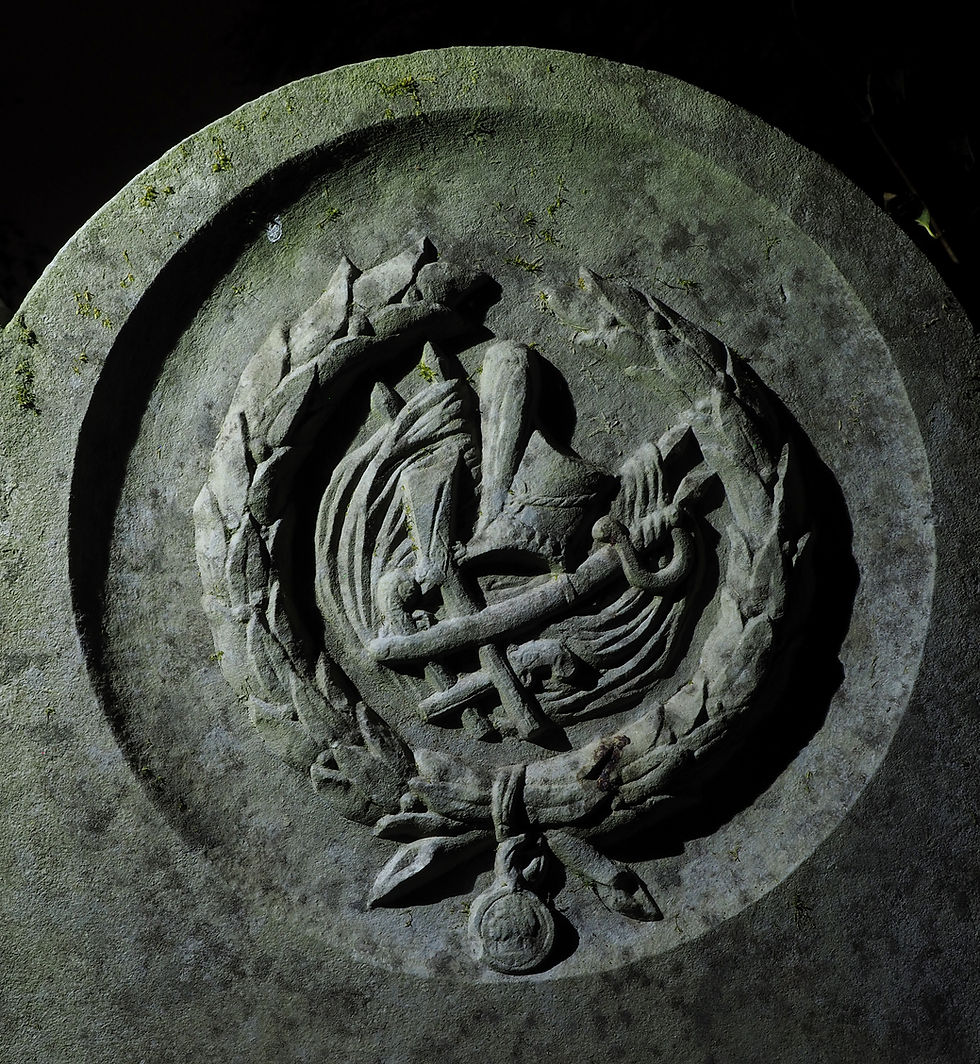A Waterloo Veteran's Grave - Private Joseph Peters, 7th Hussars
- Stephen Callaghan
- Sep 4, 2020
- 2 min read

Viewing graves at night is always an interesting experience. You never know what to expect and when you view memorials using a high powered torch, you will often see details not normally visible during day time. One such trip to Connellmore Graveyard, just outside Newbridge, County Kildare, resulted in finding quite a remarkable headstone to a veteran of the Battle of Waterloo.
The headstone is made of limestone and consists of a finely incised inscription (transcription below), which details the service of Private Joseph Peters, of the 7th Hussars. The stonecutter who made the headstone is recorded in capital font as Geoghegan of Naas. The most interesting part of the memorial (in my opinion) is the design. It consists of a laurel wreath, inside are cross flags along with a crossed musket and sabre and a crossed pair of cavalry pistols. In the centre is a Hussar’s headdress. To finish it off, and the icing on the cake, is a Waterloo medal hanging from the bottom of the laurel wreath.
SACRED
to the Memory of
Joseph Peters a Private in the Seventh
(Oween’s own) Regt of Hussars
died at Newbridge 23rd October 1829
having served his King with fidelity
and Honour for more than 20 Years
The noncommissioned Officers, Officer and Privates
of his Regt have erected this Stone to
commemorate the services of a brave Soldier
No service record survives for Private Peters, but we can gather some basic information about his service from his headstone and what we know from the history of the 7th Hussars. He likely enlisted in the regiment during the Napoleonic Wars. As Private Peters died in 1829 he didn’t live to claim the Military General Service Medal which was authorised in 1847. Soldier entitled to the medal had to apply for it. Had he been alive, the respective medal roll would have indicated which clasps he was entitled to and therefore what actions he was present at. Without this information we at least know the 7th Hussars took part in the Battle of Sahagún (21 December 1808), Battle of Benavente (29 December 1808), both in Spain.

The 7th Hussars returned to the Peninsular in August 1813 and took part and charged at the Battle of Orthez (17 February 1814). Later in the March the unit moved to Brighton, England where they took part in suppressing rioting due to the imposing of the Corn Laws (fees and trade restrictions on the import of food and grain).
In 1815 the regiment was sent to the Netherlands where it took part in the action at Genappe (17 June). The following day the regiment took part in the Battle of Waterloo, being held in reserve until the evening when they took part in charges.
When Private Peters died the regiment was likely stationed in the cavalry barracks in Newbridge. As the was no military cemetery at Curragh Camp at the time (opened in 1866), soldiers who died in the barracks would have been buried in local burial grounds around Newbridge and the surrounding environs.





Comments